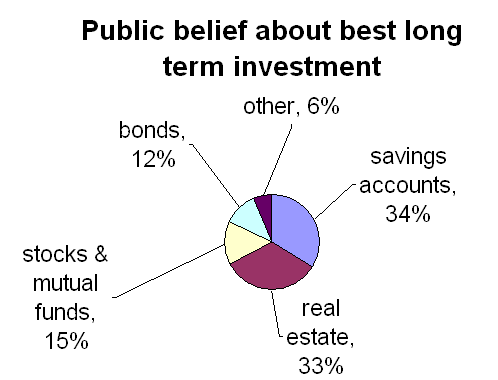Telcos: the dotcom crash all over again?
 One of the market themes that is starting to looking interesting is telcos. You know, those boring mature industries, whose fixed phone line legacy business is gradually being whittled away by the internet?
One of the market themes that is starting to looking interesting is telcos. You know, those boring mature industries, whose fixed phone line legacy business is gradually being whittled away by the internet?
The ones who are dying a slow death whilst being whipped by regulators at the same time?
Doesn’t really sound attractive?
Well some of the charts bear this horror story out – take a look at the largest Australian telco, Telstra for example:
If you’ve been sitting in this stock for 5 years you wouldn’t have been too pleased – and why should the situation change?
For example isn’t it the case that:
- telcos like say Telstra are haemorraghing fixed line subscribers and competing at the same time with VOIP?
- cellphone service providers like Vodafone are going to be wiped out by upcoming technologies like Wimax?
Well… maybe … and maybe not.
Telco investment risk mitigation factors
What if it’s not quite as bad as the market perceptions of risk? What about:
- PEs in single digits and high dividend yields (5-10%)
- growing broadband subscribers
- growth in mobile data (all those iPhones out there are the automobile equivalents of Hummers in the smartphone world and there is an avalanche of iPhone pretenders from manufacturers like HTC for Android – and soon Windows Phone 7 – emerging every month now)
- in the case of the larger telcos quite geographically diversified operations (i.e. natural currency hedges)
- for segments like mobile data with significant network effects (users want the widest possible signal coverage wherever they travel) there is limited competition from only one or two other players
Here are some comparative figures for BT and Telstra (mixed mode telcos) and Cable and Wireless and Vodafone (more mobile based revenue):
| Valuation Comparisions 14/12/09 | PE | Price / Cashflow | Market Cap £ Billion | Rev Growth 1Y % * | Div Yield 13/6/10 |
| BT | 7.48 | 2.5 | 9.7 | -2% * | 5.44 |
| Telstra | 8.97 | 4.05 | 20 | -2.9% ** | 8.8 |
| Cable & Wireless Communications | 11.92 | 6.52 | 1.5 | n/a | 9.8 |
| Vodafone | 8.41 | 5.81 | 70 | -1.6% * | 6.44 |
* Preliminary results to 31/3
** half year ended 31 Dec 2009 v same period previous year
The low digit PEs imply there is relative risk about some of these companies (and yep, as we all know it’s really risk that revs up your return).
 On the risk to fixed line revenues as they migrate to mobile-only households point consider a situation where 25% of the population works from home all of the time and a good proportion occasionally. Are they going to rely solely on wireless for their connection to the cloud and business contacts?
On the risk to fixed line revenues as they migrate to mobile-only households point consider a situation where 25% of the population works from home all of the time and a good proportion occasionally. Are they going to rely solely on wireless for their connection to the cloud and business contacts?
What about the booming online gaming market (where latency is really important)? And what about the increasing availability of online movie download systems (whether legal or illegal!) – with the average movie over a gigabyte in size (Cisco is currently forecasting huge growth in video traffic over the next few years)?
And as for the VOIP point, again you still need the underlying wireline for VOIP. And for many of these (use of web based applications, increased video, and voice) latency is important and data flowing back ‘up’ the pipe to the telco is important (as opposed to situations like cable television based internet connections where the ‘up channel’ is much slower). This all means more data coming up and down the pipes owned by these telcos.
Wimax reportedly has quite a lot of issues in handling high volumes of traffic at its backend, and just to further naunce (hopefully that’s a verb) this picture there is also the issue of IPv6 (the world basically running out of IP addresses so if you currently have significant IP address range allocations, as some of these companies do, that could be regarded as a valuable asset).
The best telcos if you believe data demand will support these stocks
If you think that perhaps reports of the death of the fixed line has been greatly exaggerated and data demand will soar, where might you go?
Vodafone
Well Vodafone is more of a pure-play in mobile data if you look at their revenue breakdown:
| Vodafone | |
| voice | 66% |
| messaging | 12% |
| data | 11% |
| fixed line | 8% |
| other | 4% |
but at the same time it is a very European play if you are worried about currency exposure with about 3/4ths of its revenue from Europe.
So Vodafone’s one possibility if you are not worried about the Euro exposure.
BT I have also been in and out of over the last 18 months however the issue with BT as a pure play (on the rise in IP-based data consumption on mobile and fixed lines) is that it has a large services component.
If, however, you do not think it’s necessary to discriminate between telecoms companies on the basis of the revenue splits and currency exposure you could also always consider iShare’s Telecommunications ETF. Top holdings as at 11 June 2010 might also give you some other ideas as to specific stocks:
| 15.59% | AT&T INC |
| 11.21% | VODAFONE GROUP PLC |
| 8.42% | VERIZON COMMUNICATIONS INC |
| 8.06% | TELEFONICA SA |
| 5.14% | CHINA MOBILE LTD |
| 3.88% | FRANCE TELECOM SA |
| 3.50% | DEUTSCHE TELEKOM AG-REG |
| 3.14% | TELSTRA CORP LTD |
| 3.12% | NIPPON TELEGRAPH & TELEPHONE |
| 2.70% | AMERICA MOVIL-ADR SERIES L |
Cable and Wireless Communications
A less obvious play on mobile data (and less popular than Vodafone) which I’m currently holding is Cable and Wireless Communications
| CWC | |
| mobile | 40% |
| broadband | 9% |
| domestic voice | 19% |
| international voice | 8% |
| enterprise, data and other | 24% |
which is 84% USD “pegged or earned” revenue but diversified across some more interesting geographical regions (which however are not Europe and not the USA) such as Panama, the Caribbean, Monaco, and Macau (in order of descending EBITDA).
The chart is somewhat meaningless since it was demerged from C&W earlier this year but here it is if you want to look at it.
Telstra
 Finally, I also hold Telstra (see chart at the top of this article).
Finally, I also hold Telstra (see chart at the top of this article).
It is currently plagued in somewhat similar manner to BP by issues around regulatory risk as the Australian government implements the national broadband network.
However it is also a very widely held share in Australia (i.e. the government would lose a lot of votes if it destroyed the value in it) and BT survived being split into a wholesale and retail arm so I think it is likely that Telstra will also survive.
The risk of the publically funded National Broadband Network (NBN) fibre to the home project not buying its assets or doing a deal with it is really factored into the price at this point – and looking at its revenue sources is probably most likely to impact on an area that is already in decline (PSTN revenue):
| Telstra | |
| mobile | 36% |
| pstn | 34% |
| fixed retail broadband | 9% |
| ip and data access | 10% |
| ads and directories | 11% |
Telstra saw a reasonably chunky fall in PSTN by 6.9% over the last half year but actually would have actually had a revenue increase in spite of this if not for a fall in advertising revenues, and actually grew free cashflow by 37% to the end of 2009 (you almost have to feel sorry for Telstra management in the circumstances).
Telstra seems like a stock where the bad news is in the price: it’s mostly A$ exposure (and with franking if you are an Australian shareholder the dividend is huge) and my view is that it makes sense just to wait out the regulatory / NBN uncertainty and be paid while you do.
You would not be entirely alone if you decided to hold it: Maple Brown Abbott, a good long term value fund here in Australia, has Telstra as their largest holding.
To spread your risk further you could probably safely hold all three: Vodafone, CWC, and Telstra.
Posted under individual stocks, Risk
This post was written by mike on June 13, 2010









